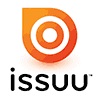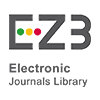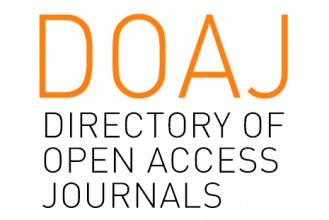Video Virality Models in Constructing Clickbaits as Applied in Muhammad Faizar Islamic Preaching Contents
Abstract
Video technology serves as one of the most efficient tools for contemporary Islamic preaching. One prominent implementation of virtual preaching tools is the social media platform YouTube. This study aims to identify effective methods for implementing technological preaching through the linguistic features of clickbait, which are used to attract viewers to videos on YouTube. This research follows a qualitative approach with an interpretative analysis. The data source for this study is the Muhammad Faizar Official YouTube channel, while the research data comprise videos featuring clickbait vocabulary in their thumbnails. The study employs an observational method with note-taking and non-participatory observation techniques, followed by classifying videos into different levels of virality based on views, comments, likes, and duration. The findings reveal that word choice, thematic elements, and the aesthetic presentation of fonts in clickbait serve as key models in driving video virality. Ultimately, the vocabulary and sociocultural factors embedded in clickbait are proven to influence the effectiveness of dakwah videos in disseminating religious values through viral video content.
Keywords
Full Text:
PDFReferences
Al-Bahjah TV. (2015). Al-Bahjah TV. https://www.youtube.com/@albahjah-tv/featured.
Al-Buthy, M. S. R. (1999). Fiqhus sirah. Robbani Press.
Alves, L., Antunes, N., Agrici, O., Sousa, C., & Ramos, C. M. Q. (2016). Click bait: You won’t believe what happens next. Fronteiras: Journal of Social, Technological and Environmental Science, 5(2), 196–213. https://doi.org/10.21664/2238-8869.2016v5i2.p196-213.
Anshori, A. (2018). Kuliah ilmu dakwah: Pendekatan tafsir tematik. UAD Press.
Anza Media Group. (2018). Anwar Channel KH. Anwar Zahid. https://www.youtube.com/ @AnzaChannelKHAnwarZahid.
Bayanuni, A. F. A. (2010). Al-madkhal ila ‘ilmi ad-da‘wah: Dirasah manhajiyyah syamilah li tarikh ad-da’wah wa ushuliha wa manahijiha wa asalibiha wa wasa’ilha wa musykilatiha fi dhau’ an-naql wa al-‘aql. Dar Ar-Risalah Al-‘Alamiah.
Bignell, J. (2008). An introduction to television studies (2nd ed.). Routledge.
Biyani, P., Tsioutsiouliklis, K., & Blackmer, J. (2016). 8 amazing secrets for getting more clicks: Detecting clickbaits in news streams using article informality. In Proceedings of the Thirtieth AAAI Conference on Artificial Intelligence (AAAI-16) (Vol. 30, No. 1, pp. 94–100). https://doi.org/10.1609/aaai.v30i1.9966.
Blom, J. N., & Hansen, K. R. (2015). Click bait: Forward-reference as lure in online news headlines. Journal of Pragmatics, 76, 87–100. https://doi.org/10.1016/j.pragma.2014.11.010.
Das’ad Latif. (2017). Das’ad Latif. https://www.youtube.com/@DasadLatif.
Denzin, N. K., & Lincoln, Y. S. (1998). Handbook of qualitative research (2nd ed.). Sage Publications.
Hadiyat, Y. D. (2019). Clickbait di media online Indonesia. Jurnal Pekommas, 4(1), 1–10. https://doi.org/10.30818/jpkm.2019.2040101.
Hanan Attaki. (2017). Hanan Attaki. https://www.youtube.com/@HananAttaki/about.
HiDEF. (2017). An introduction to video 101. https://www.hidefnj.com/video.
Kemm, R. (2022). The linguistic and typological features of clickbait in YouTube video titles. Studies in Communication Sciences, 1(1), 66–80. https://doi.org/10.2478/sc-2022-0007.
Kertanegara, M. R. (2018). Penggunaan clickbait headline pada situs berita dan gaya hidup Muslim Dream.co.id. MediaTor: Jurnal Komunikasi, 11(1), 31–43. https://doi.org/10.29313/ mediator.v11i1.3706.
Lastufka, A., & Dean, M. W. (2009). YouTube: An insider’s guide to climbing the charts. O’Reilly Media.
Mitcham, C. (1994). Thinking through technology: The path between engineering and philosophy. The University of Chicago Press.
Muchlas, M., Nurhadi, N., Suwarjo, S., & Subandowo, S. (2022). Dakwah Muhammadiyah dalam masyarakat digital: Peluang dan tantangan. UAD Press.
Muhammad Faizar. (2020). Muhammad Faizar Official. https://www.youtube.com/@ MuhammadFaizar.h.
Munir, M., & Ilaihi, W. (2006). Manajemen dakwah. Kencana Prenada Media Group.
O’donovan, C. (2014). What is clickbait? NiemanLab. https://www.niemanlab.org/2014/08/what-is-clickbait/.
Queen Lala. (2015). Queen Lala. https://www.youtube.com/@queenlalaa.
Schjoedt, L., Brӓnnback, M. E., & Carsurd, A. L. (2020). Understanding social media and entrepreneurship: The business of hashtags, likes, tweets, and stories. Springer.
Sumargo, D. (2020). LALA KENA GUNA-GUNA!? SAMPAI HARUS DI RUQYAH DISINI !! (LALA & USTAD FAIZAR) – Curhat Bang. CURHAT BANG Denny Sumargo. https://www.youtube.com/watch?v=E_afErzMTfc.
DOI: http://dx.doi.org/10.18415/ijmmu.v12i6.6746
Refbacks
- There are currently no refbacks.
Copyright (c) 2025 International Journal of Multicultural and Multireligious Understanding

This work is licensed under a Creative Commons Attribution-NonCommercial-NoDerivatives 4.0 International License.
https://ijmmu.com
editor@ijmmu.com
facebook.com/ijmmu
Copyright © 2014-2018 IJMMU. All rights reserved.



































